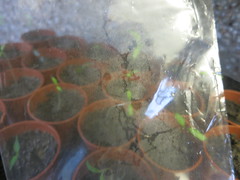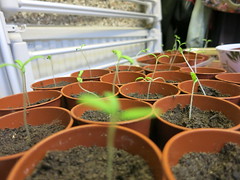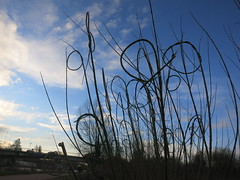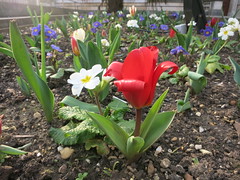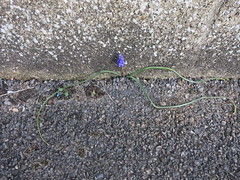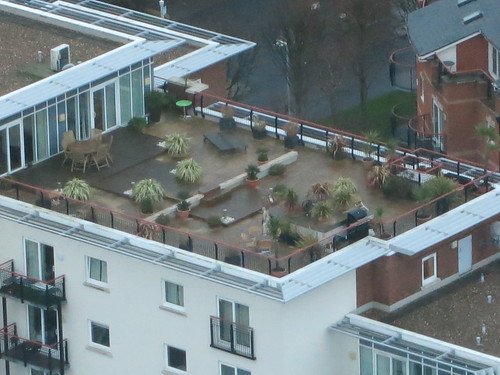
Eagle eyes among you may have spotted that my colour pops appear to be unseasonal Petunias. Earlier that day I had cracked and gone to the garden centre, for was it not bank holiday weekend? And while nominally I needed a proper heavy pot for the Pierises that kept falling over, actually I had my mind on the plugs of bedding plants, which I was betting would include the hot new varieties and indeed Petunias Night Sky and Cremissimo were waiting for me. I took two plants with forced flowers and pinched them out as soon as I got them home.


Night Sky looks as impressive as I thought it would. Blotch-pattern petals are having a bit of a moment this year. I've got two plants and will be interested to see what variation we get, between flowers on the same plant and different plants.

The rest of the bouquet is a stem of Hellbore I knocked off in error, a ruffled Daff I found face-down in the mud with a bent stem, and some glossy leaves from my gorgeous Black Celandine. My camera's preview screen isn't working any more at all. Can you tell?







